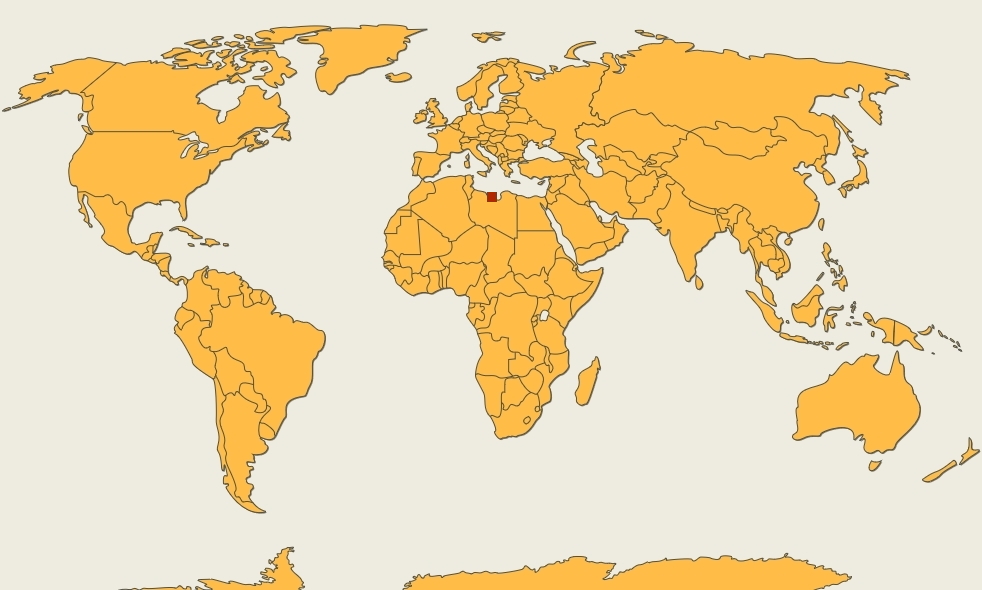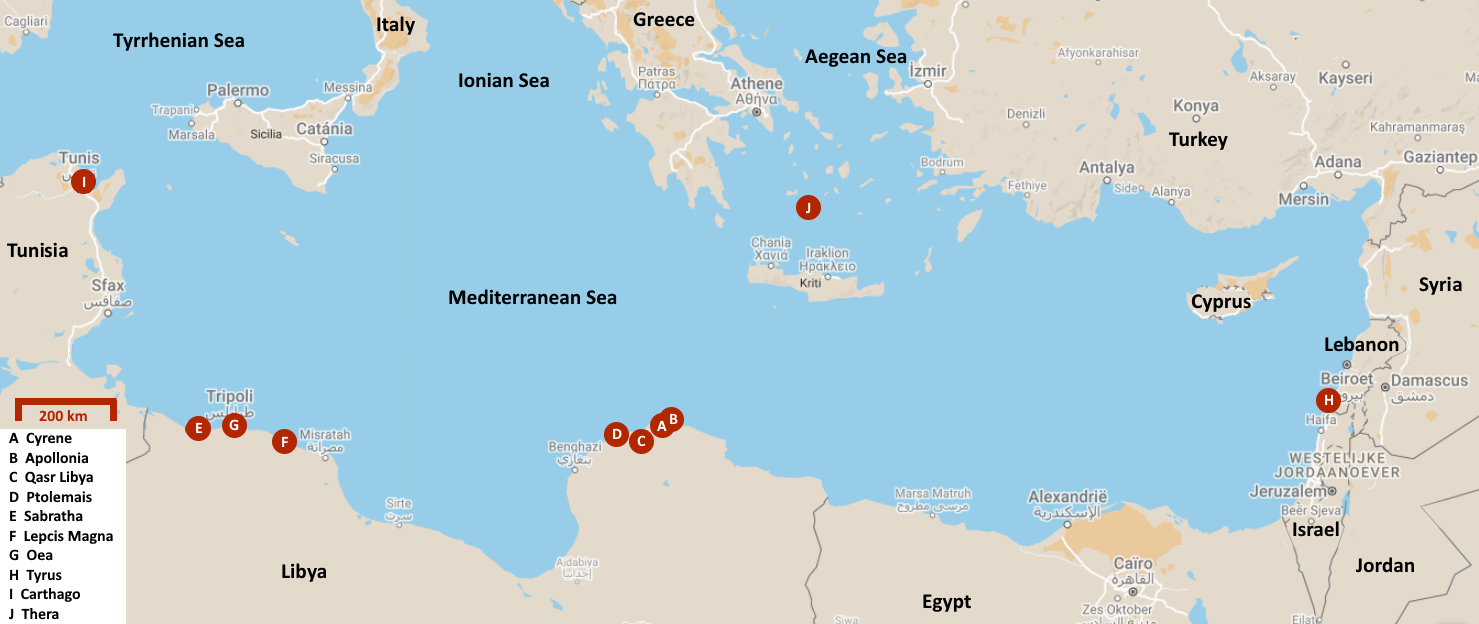Then the Romans came
Libya | Classical Era | Anno 2005


Mare Nostrum, Our Sea, is what the Romans called the Mediterranean Sea. Understandable, because from 44 CE they controlled the entire coastal area.
But that hasn't always been the case. The first to dominate the Mediterranean were the Phoenicians. They started doing this from about 1200 BCE, not so much to conquer land, but to build a maritime trade network. And they did so from humble city-states such as Byblos, and Sidon on the coast of present-day Lebanon.
For nearly a thousand years they were the dominant trading power in the Mediterranean world. Their trading empire stretched from the Near East beyond the Strait of Gibraltar. Cities like Málaga, Tangier and Cádiz were founded by Phoenicians. More than any nation, they have helped great civilizations such as those of Mesopotamia, Egypt, and Greece to exchange their knowledge, culture and ideas.
The Phoenicians owed their commercial success primarily to the export of the purple dye. They produced it from a gland of a sea snail, the purple dye murex. We still don't know exactly how they did that. It was a monopoly they held tight. Purple remained very expensive and soon became a status symbol, not least among the Romans.
From the 9th century BCE onwards, the Phoenicians found themselves in a difficult situation. Great powers such as the Assyrians and Babylonians placed the city-states under their control. In the 7th century BCE, Phoenicians founded the city of Carthage in present-day Tunisia. That quickly became a civilization in itself. The relationship with the Berbers of the interior was excellent. Gradually, a mixed civilization emerged that was called the Punics.
The Greeks on the other hand were forced to handle things very differently. From 850 BCE they started to establish colonies, not for commercial purposes, but out of sheer necessity. Because the population explosion in their mountainous country led to a shortage of housing and agricultural land. The Greek colonization was an organized undertaking, in which the destination was predetermined in function of fertile soil and available raw materials, if possible after reconnaissance on the spot. Before departure, an expedition leader was appointed who led the settlers, saw to it that the new land was parcelled out, and administered the new city-state.
Scattered across the Mediterranean, the Greeks would found many hundreds of cities, including Marseille, Naples, and Benghazi. Southern Italy was so heavily Hellenized that it was called Magna Graecia, Greater Greece.
The Romans did not like the fact that the Punics had been calling the shots in the western part of the Mediterranean all this time. When the Carthaginians in 264 BCE started interfering with Sicily, Rome saw it as a direct threat. The First Punic War was a fact.
As a land force, Rome with its twenty warships seemed to stand no chance against the Carthaginians with their fleet of hundreds of ships. But the Romans began to build ships, gain experience at sea, brave storms, wage naval battles. The naval war lasted twenty-three years and turned out to be the greatest of antiquity. In the end, it was the Carthaginians who tasted defeat. The Romans, on the other hand, had already launched a thousand ships and laid the foundation for six hundred years of hegemony at sea.
Half a century later, the Carthaginian Hannibal Baskar wanted revenge. The Second Punic War was to be fought on land. Hannibal terrified the Romans by crossing the Alps in 218 BCE with his army, which included about forty war elephants. For fourteen years he would sow terror on the Italian peninsula. But he would never besiege Rome.
A strategic mistake, because behind his back the Roman General Scipio began to threaten Carthage via Spain. Once again the Punics faced defeat. They had to accept harsh peace terms, but their capital remained unscathed. At least for now. Because after the third Punic War in 146 BCE the adage of Cato the Elder – Carthago delenda est – would become reality.
From now on, Rome was able to extend its power over the Mediterranean without much difficulty. However, this came to an end in the 5th century, when the Western Roman Empire had to surrender most of North Africa to the Vandals. Byzantium, the capital of the Eastern Roman Empire, was able to regain control for a time, but by the end of the 7th century it had to give way to the Islamic Caliphate of the Umayyads.
The Roman presence in North Africa was now history, but the heritage of Phoenician, Greek and Roman cultures is still prominent in the Libyan coastal strip.
Jaak Palmans
© 2022| Version 2022-08-16 16:00


